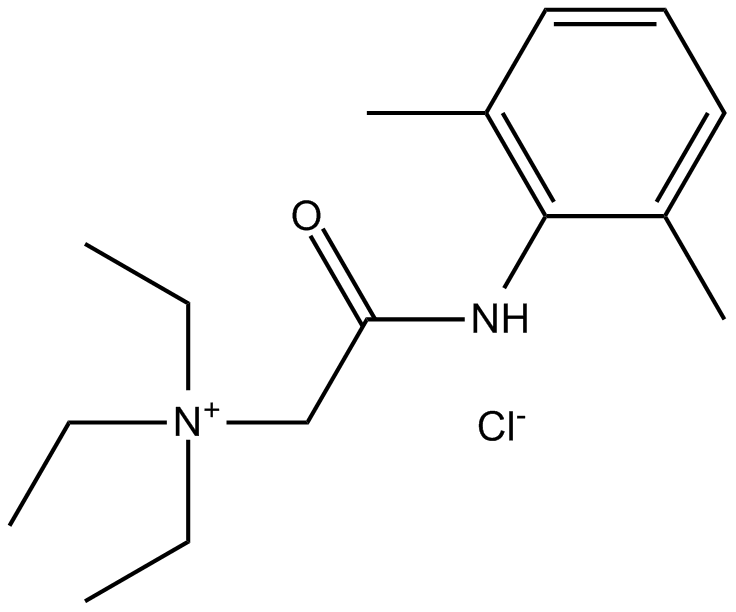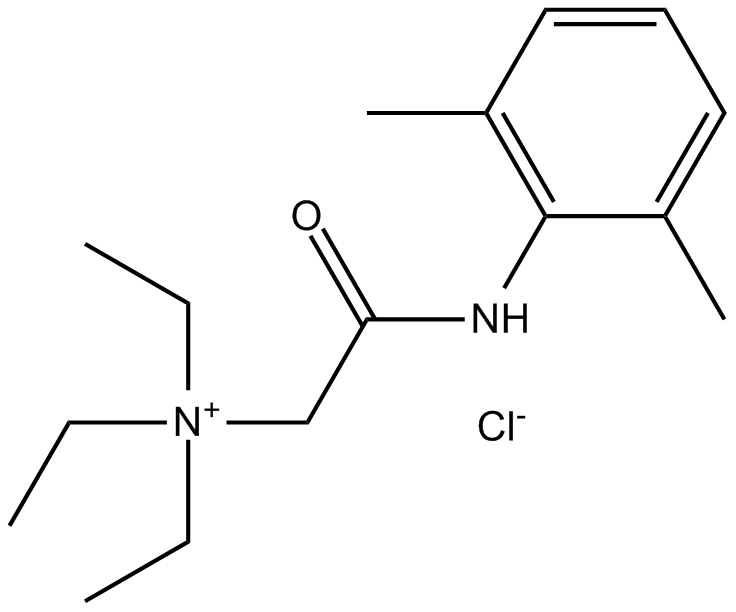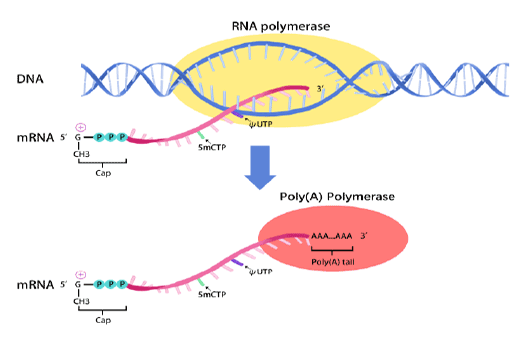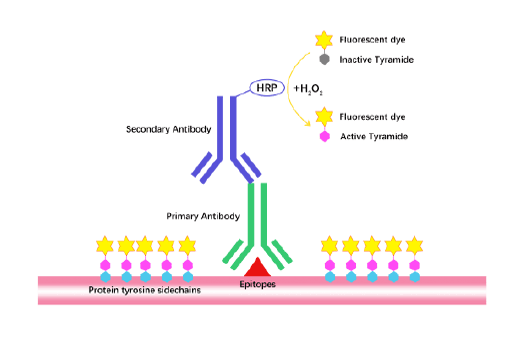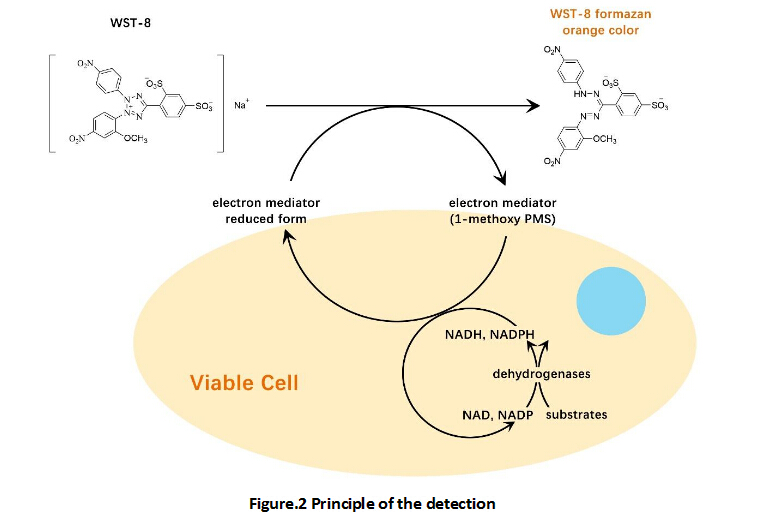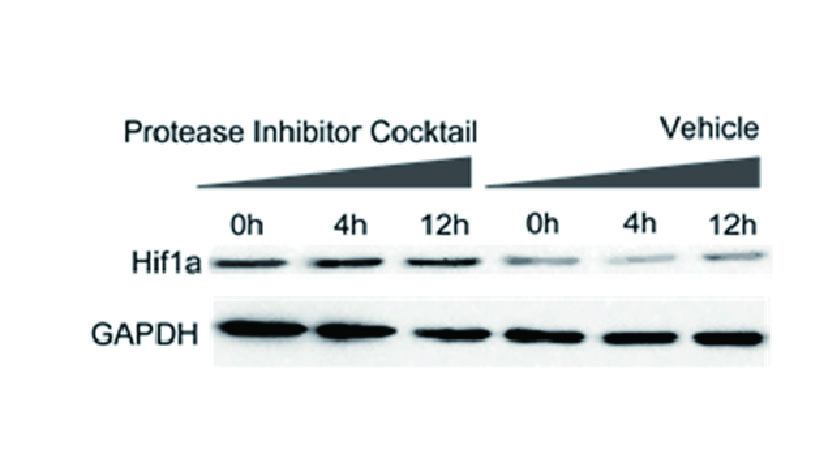QX 314 chloride
QX 314 chloride is a relatively membrane-impermeable lidocaine derivative that selectively blocks voltage-activated Na+ channels on nociceptive neurons and induces a preferential nociceptive block, presumably by permeating through the channel pore of the capsaicin receptor transient receptor potential vanilloid 1 (TRPV1), as well as the pore of transient receptor potential cation channel, subfamily A, member 1 (TRPA1). When applied externally, QX 314 chloride alone exhibits no effect on the activity of Na+ channels in small sensory neurons, but when applied in the presence of the TRPV1 agonist capsaicin, QX 314 chloride blocks sodium channels and inhibits sensory neuron excitability. In addition, QX 314 chloride is also effective on motor neurons, capable of inducing a strong and long-lasting motor block.
References:
1. Stueber T, Eberhardt MJ, Hadamitzky C, et al. Quaternary Lidocaine Derivative QX-314 Activates and Permeates Human TRPV1 and TRPA1 to Produce Inhibition of Sodium Channels and Cytotoxicity. Anesthesiology, 2016, 124(5): 1153-1165.
2. Binshtok AM, Bean BP, Woolf CJ. Inhibition of nociceptors by TRPV1-mediated entry of impermeant sodium channel blockers. Nature, 2007, 449(7162): 607-610.
| Physical Appearance | A solid |
| Storage | Store at RT |
| M.Wt | 298.85 |
| Cas No. | 5369-03-9 |
| Formula | C16H27N2OCl |
| Solubility | insoluble in EtOH; ≥14.95 mg/mL in DMSO with gentle warming; ≥22.3 mg/mL in H2O |
| Chemical Name | 2-((2,6-dimethylphenyl)amino)-N,N,N-triethyl-2-oxoethanaminium chloride |
| SDF | Download SDF |
| Canonical SMILES | CC[N+](CC)(CC)CC(Nc1c(C)cccc1C)=O.[Cl-] |
| Shipping Condition | Small Molecules with Blue Ice, Modified Nucleotides with Dry Ice. |
| General tips | We do not recommend long-term storage for the solution, please use it up soon. |
| Cell experiment:[1] | |
|
Cell lines |
Human embryonic kidney 293 (HEK-293) cells expressing hTRPV1 or hTRPA1, as well as the sodium channel Nav1.7 |
|
Reaction Conditions |
5 mM QX 314 chloride |
|
Applications |
Coapplication of 5 mM QX 314 chloride and capsaicin (for activation of hTRPV1) resulted in a prominent use-dependent inhibition of sodium currents. Similarly, 5 mM QX 314 chloride in combination with 200 μM carvacrol (for activation of hTRPA1) produced a significantly stronger use-dependent block of sodium currents in cells expressing hTRPA1 compared with carvacrol alone. |
| Animal experiment:[2] | |
|
Animal models |
Sprague-Dawley rats |
|
Dosage form |
0.2%, 100 ml Regional injection |
|
Applications |
Injection of QX 314 chloride together with capsaicin into rat hindpaws produced a long-lasting (more than 2 h) increase in mechanical and thermal nociceptive thresholds. Long-lasting decreases in pain sensitivity were also seen with regional injection of QX 314 chloride and capsaicin near the sciatic nerve. |
|
Note |
The technical data provided above is for reference only. |
|
References: 1. Stueber T, Eberhardt MJ, Hadamitzky C, et al. Quaternary Lidocaine Derivative QX-314 Activates and Permeates Human TRPV1 and TRPA1 to Produce Inhibition of Sodium Channels and Cytotoxicity. Anesthesiology, 2016, 124(5): 1153-1165. 2. Binshtok AM, Bean BP, Woolf CJ. Inhibition of nociceptors by TRPV1-mediated entry of impermeant sodium channel blockers. Nature, 2007, 449(7162): 607-610. |
|
Quality Control & MSDS
- View current batch:
Chemical structure
